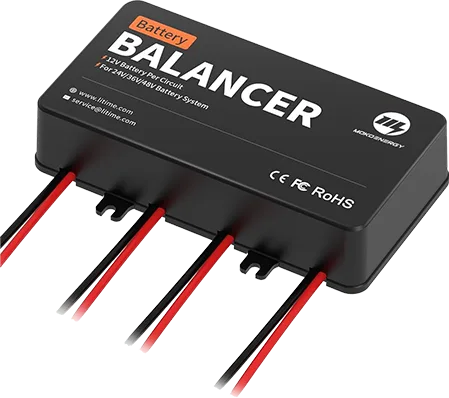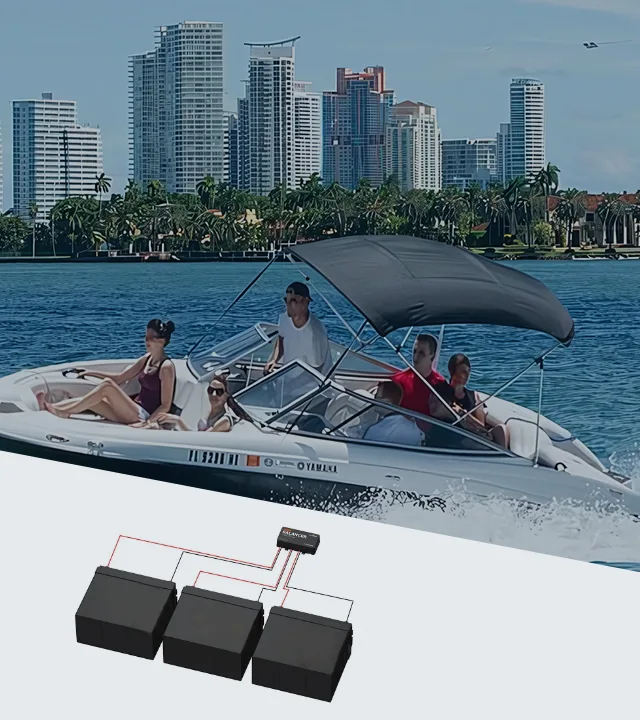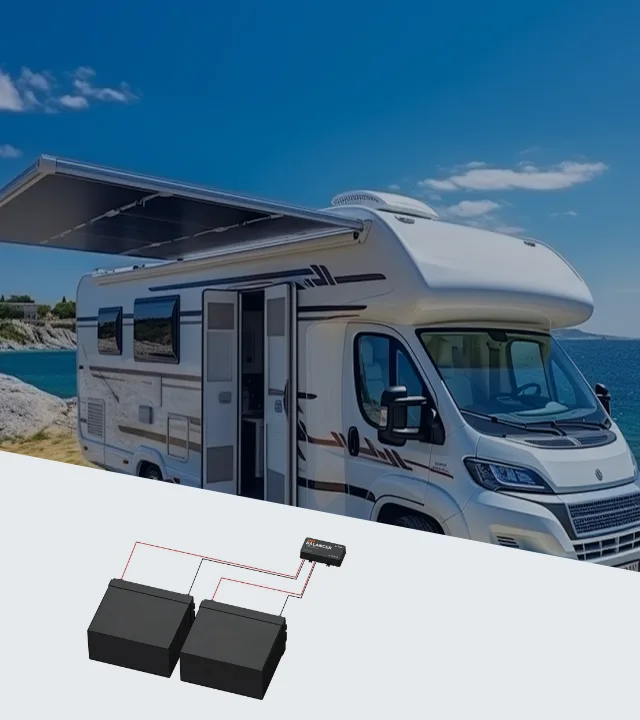Maximize Battery Performance with
MOKOEnergy's Battery Balancer
Power Up with Precision Perfect Balance, Peak Performance
Explore Our Battery Balancer
Portable Battery Monitor with Shunt
Battery Types
LiFePO4 Lithium Battery, Lead Acid, Gel, FLA, SLA Battery
Supports for
24V/36V/48V battery system
Input Voltage Range
3-20V DC per circuit
Working Current Draw
0-10A
Standby Current Draw
5mA
Operating Temperature
-20℃~+50℃
Low Voltage Disconnect
1.8V
Protection
Short Circuit, Reverse Polarity Protection
Connection Terminals
M8 Ring Terminals

Our Battery Balancer Are Used For

Energy Storage System
Actively monitors and balances cell voltages across multiple battery strings to maximize usable capacity,enhance overall system efficiency and safety.

Marine
Precisely balances voltages in harsh marine environments, preventing hazardous overcharging situations and prolonging battery life despite constant charging/discharging cycles.

RV Battery System
Intelligently manages the RV's battery bank, equalizing charge levels across batteries to maximize run time and reduce charging time.
Why Choose MOKOEnergy's Battery Balancer

Advanced Technology
MOKOEnergy’s Battery Balancer utilizes cutting-edge battery balancing algorithms

Wide Compatibility
Can work with various battery chemistries and configurations, and supports various applications.

Easy Installation
Easy to set up MOKOEnergy Battery Balancer, with clear instructions and user-friendly interfaces.

Improved Safety
Actively monitoring and balancing the cells, helps preventing thermal runaway, overheating, and other potential hazards.

Customizable Settings
We offer customizable settings, allowing you to fine-tune the balancing parameters according to your specific requirements.

Reliable and Durable
Built with high-quality components and rigorous testing, provide reliable performance over an extended time.
FAQs of Battery Balancer
A battery balancer is a device used to equalize the charge levels across multiple battery cells or packs connected in series. It helps to prevent overcharging of some cells and undercharging of others, which can lead to reduced battery life and potential safety issues.
Battery balancing is crucial because, over time, individual cells in a battery pack can become imbalanced due to slight manufacturing differences or variations in temperature and usage patterns. Imbalanced cells can cause premature battery degradation, reduced capacity, and potential safety hazards.
Battery balancers typically use one of two methods: active balancing or passive balancing. Active balancing involves transferring charge from higher-capacity cells to lower-capacity cells, while passive balancing dissipates excess energy from overcharged cells as heat.
Battery balancers are recommended for use with battery packs containing multiple cells connected in series, such as those found in electric vehicles, renewable energy systems, and high-capacity battery banks.
Battery balancers are designed to work with specific battery chemistries, such as lead-acid, lithium-ion, or lithium-polymer batteries. It’s important to use a balancer compatible with the battery type and chemistry to ensure proper operation and safety.
The frequency of battery balancing depends on the application and the manufacturer’s recommendations. Generally, it’s advisable to balance batteries periodically, especially after a significant number of charge/discharge cycles or if you notice a noticeable decrease in battery performance or capacity.
Installation of a battery balancer may require specialized knowledge and safety precautions, depending on the specific system and application. It’s generally recommended to follow the manufacturer’s instructions or seek professional assistance for proper installation and configuration.

